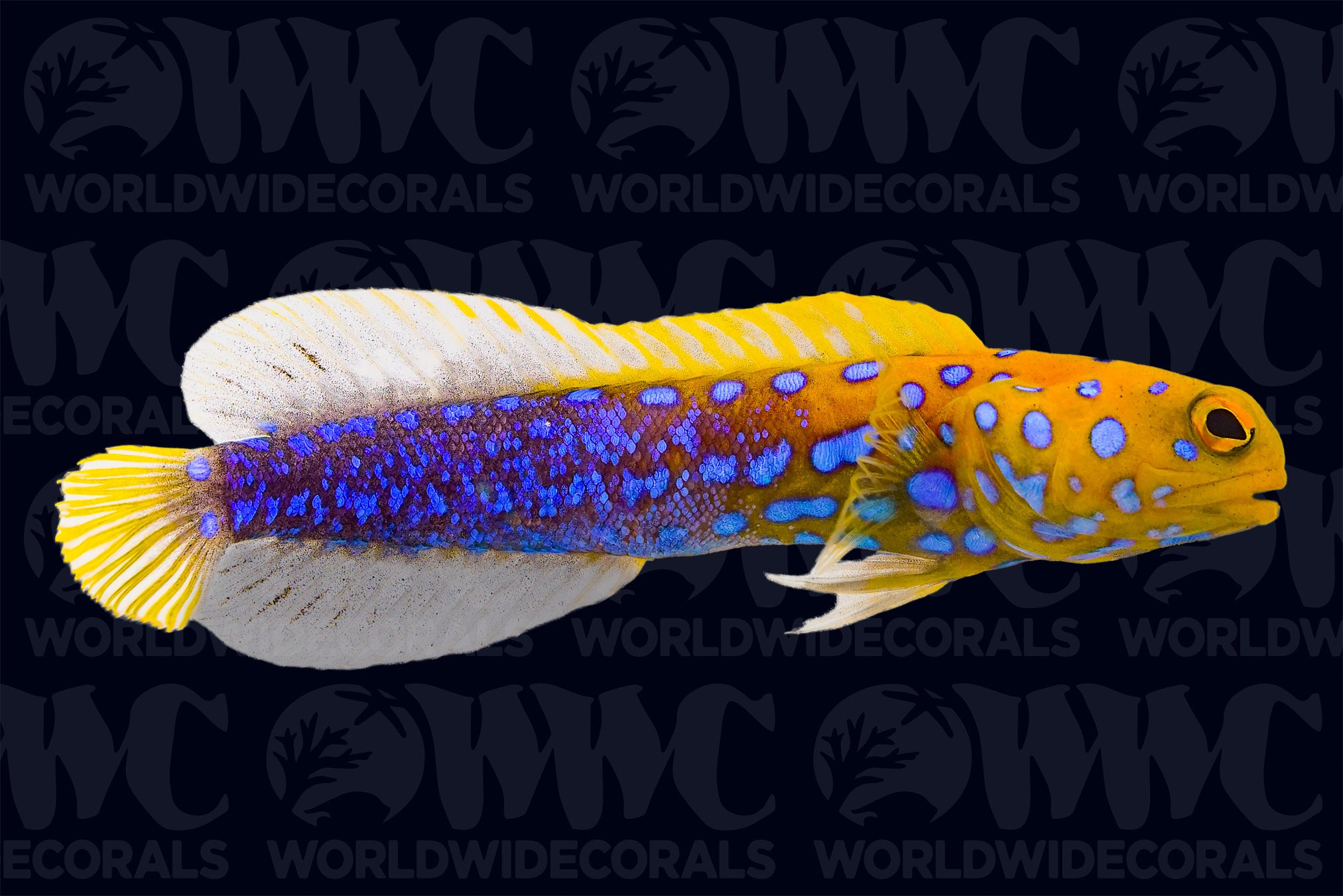Description
Paracirrhites xanthus
Hawkfish within this genus are generally reef-safe but may nip at small crustaceans, tubeworms, and fish they can fit in their mouth. They will defend their territories. Golden Hawkfish are great for beginners to the most experienced hobbyists due to their ease of care. Adults do not have a swim bladder and will use their pelvic fins for support while they perch. Golden Hawkfish will have deep blue to green eyes, and their body will range from a mottled yellow to orange or brown color. Carnivorous by nature, they should be offered live feeder shrimp, small pieces of crustaceans, clams, and other meaty foods, as well as frozen foods prepared for carnivores. They should be fed at least twice a day. These Hawkfish typically reach a size of up to 6 inches and should be added to aquariums of 30 gallons or larger for optimal space and comfort. Golden Hawkfish are commonly found on steep coral slopes with strong currents near the Indo-West Pacific Ocean, typically at depths of up to 400 feet.
Hawkfish within this genus are generally reef-safe but may nip at small crustaceans, tubeworms, and fish they can fit in their mouth. They will defend their territories. Golden Hawkfish are great for beginners to the most experienced hobbyists due to their ease of care. Adults do not have a swim bladder and will use their pelvic fins for support while they perch. Golden Hawkfish will have deep blue to green eyes, and their body will range from a mottled yellow to orange or brown color. Carnivorous by nature, they should be offered live feeder shrimp, small pieces of crustaceans, clams, and other meaty foods, as well as frozen foods prepared for carnivores. They should be fed at least twice a day. These Hawkfish typically reach a size of up to 6 inches and should be added to aquariums of 30 gallons or larger for optimal space and comfort. Golden Hawkfish are commonly found on steep coral slopes with strong currents near the Indo-West Pacific Ocean, typically at depths of up to 400 feet.
3 DAY GUARANTEE | Hassle Free | 100% Satisfaction | Online Orders Only





























